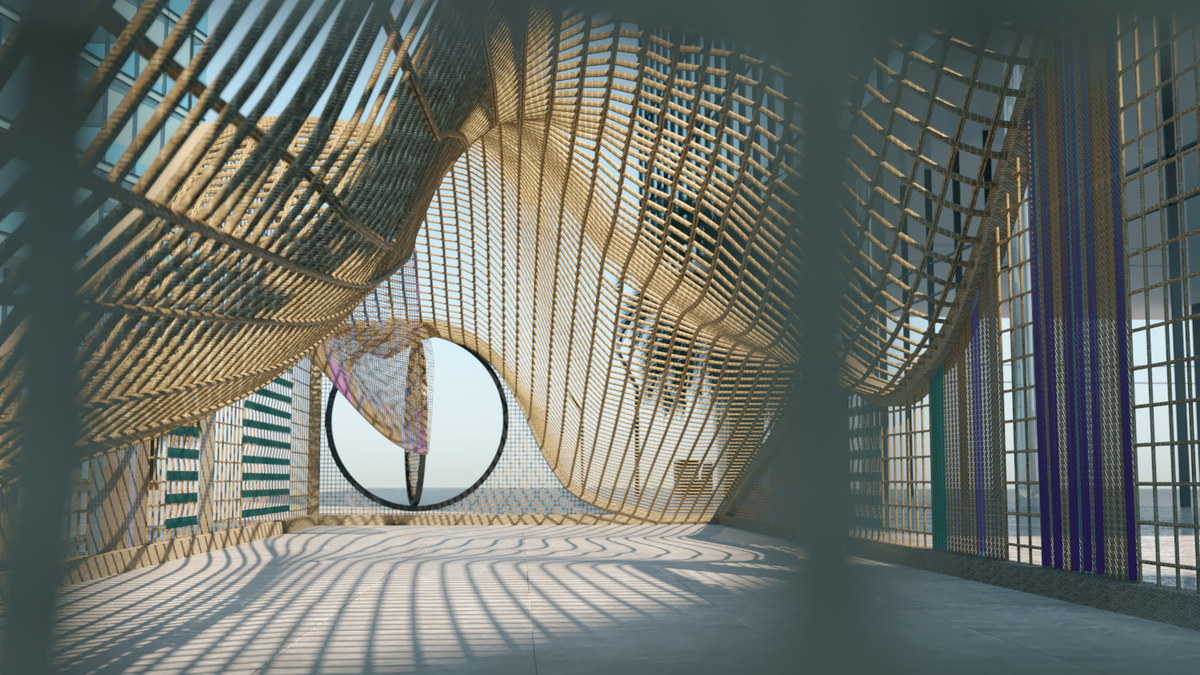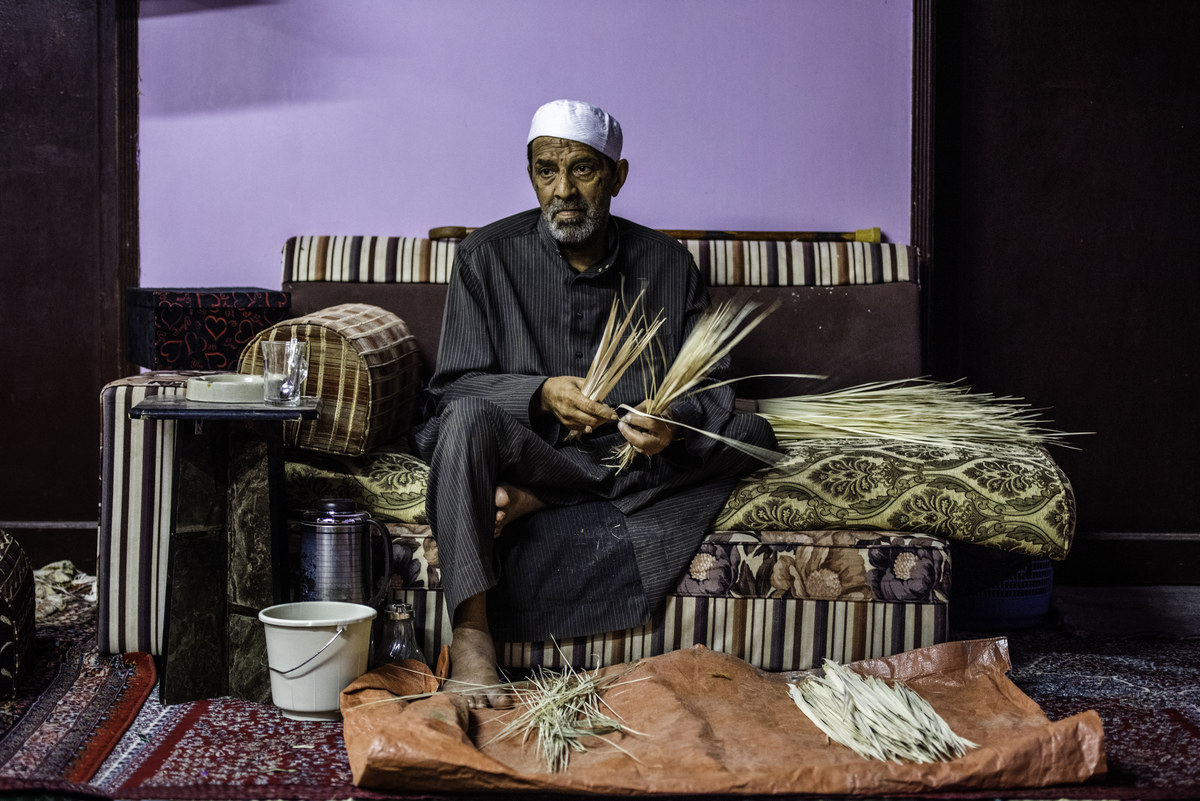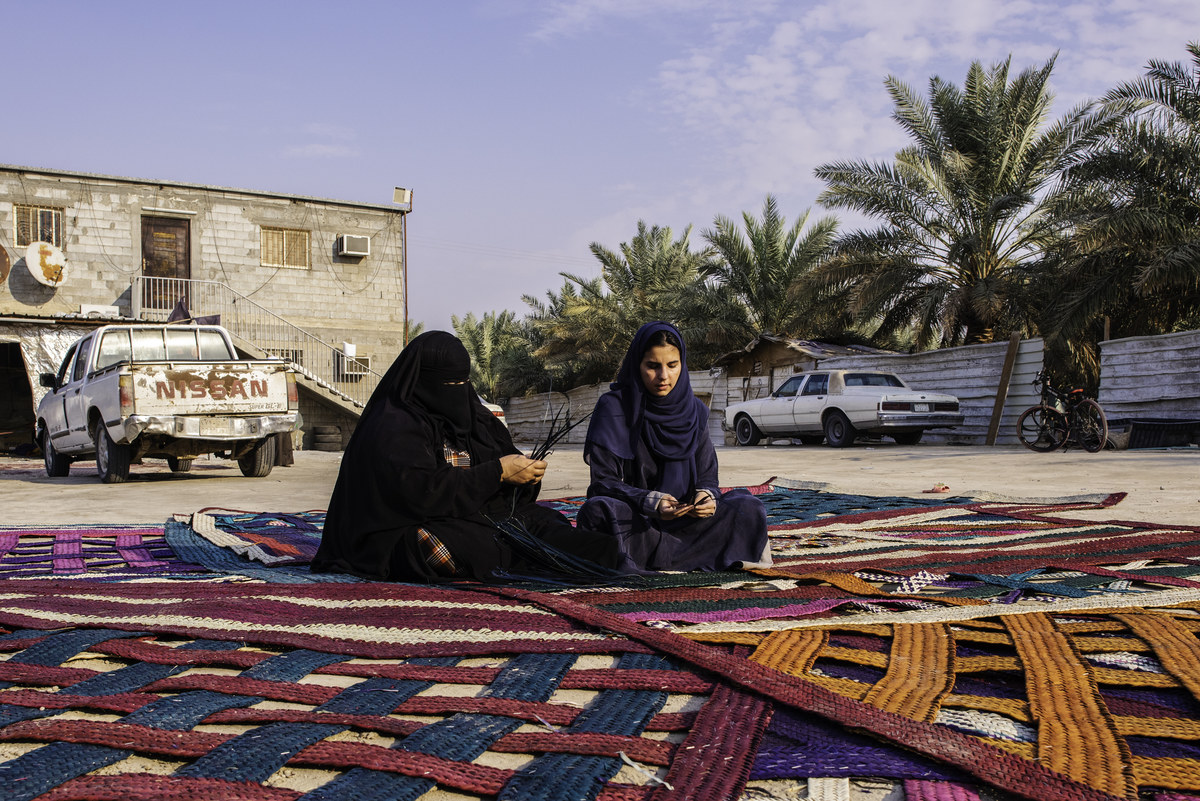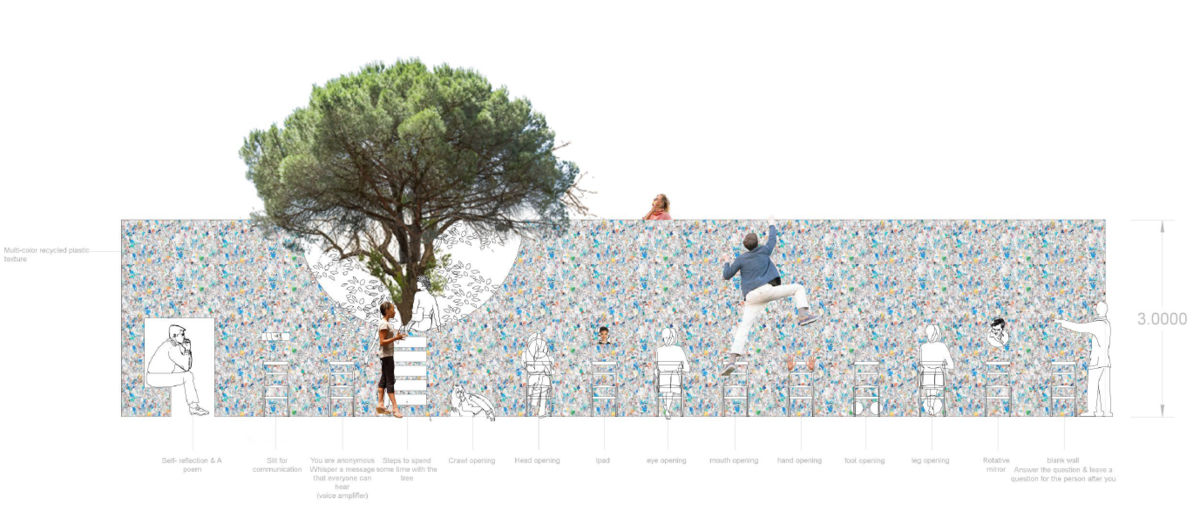DUBAI: Abwab, which translates to “door” in Arabic, is returning for the fifth edition of Dubai Design Week (DDW) from Nov. 12-16. A key exhibition for nurturing design talent from across the region, Abwab offers a platform for emerging as well as established artists and creatives to showcase their work.
“What we do is try to reflect the creative landscape of what’s happening in the Middle East, North Africa and South Asia every year, which is constantly evolving” Rawan Kashkoush, creative director of Dubai Design Week and curator of Abwab, told Arab News.
Since its inception in 2014, the installation has displayed works from more than 170 designers.

A rendering of Saudi Arabia's installation at Dubai Design Week. (Photo: Supplied)
This year, the annually remodeled exhibition invited artists hailing from countries that DDW felt “had a really strong presence in the creative landscape,” Kashkoush noted. Designers from the Eastern Province of Saudi Arabia, Lebanon and India were tasked with interpreting the theme of “ways of learning” in their own creative and unique way.
Instead of recruiting an UAE-based interior or architecture studio to build the outer shell of the exhibition, as they do each year, DDW commissioned designers from each of the selected countries to fully conjure up the exterior and interior.

Shahad Alazzaz met up with local craftsmen from the eastern provinces of the Kingdom to preserve the vanishing craft of palm frond weaving. {Photo: Turki Alangari)
Participating artists include Shahad Alazzaz, founder of Azaz Architects, a Riyadh-based design firm, Lebanese-Polish sisters Tessa and Tara Sakhi of multidisciplinary design studio T SAKHI and Mumbai-based Busride Design Studio, a Goa-based architecture firm helmed by brothers Ayaz and Zameer Basrai.
For Saudi Arabia’s pavilion, which is supported by Ithra, Alazzaz met up with local craftsmen from the eastern provinces of the Kingdom to preserve the vanishing craft of palm frond weaving. The result is a larger-than-life, 13-meter-long suspended surface, which is made up of various textiles of different colors, textures and sizes that were painstakingly handmade by local artisans before being intricately woven together. “The idea is to take a very traditional fabric and transform it into a building material,” explained Kashkoush.

Shahad Alazzaz and a local artisan. (Photo: Turki Alangari)
Meanwhile, Lebanon’s installation is entitled “WAL(L)TZ.” Since the Arab country is congested with physical barriers such as barbed wire and fenced spaces, the installation takes the form of an interactive wall crafted out of recycled foam — a nod to the resilience of the Lebanese people — that invites visitors to interact and connect with each other via cracks and holes. “The concept is metaphorically breaking down barriers,” said the curator.

Lebanon's installation takes the form of an interactive wall crafted out of recycled foam. (Photo: Supplied)
Lastly, “Qissa Ghar,” India’s pavilion, is the brainchild of the interior firm responsible for some of India’s most trendy restaurants. Since the country’s main way of transferring information and preserving their sense of identity is through story-telling and myths, the designers commissioned seven artists to translate these myths into illustrations, which were then embroidered directly onto handmade qadi fabric that was stitched into lanterns creating an illuminated web of stories.

India's pavilion is entitled “Qissa Ghar,” which means "house of stories". (Photo: AFP)












